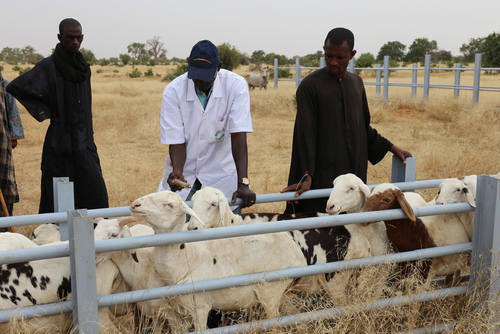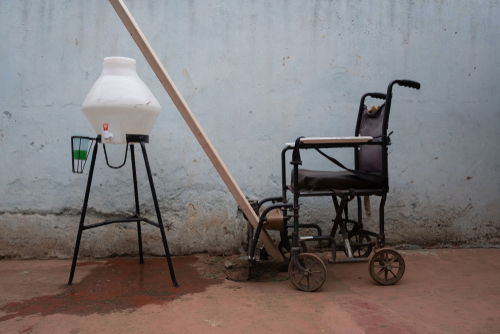September 12, 2022

Phase-1 anti-Zika vaccines found to be highly immunogenic and relatively safe.
In a recent systematic review, researchers assessed the safety and efficacy of anti-Zika candidate vaccines from five phase I clinical trials. Generally, participants experienced mild adverse effects including fever, muscle aches, and fatigue, and immunogenicity (production of antibodies against the Zika-virus) was high. However, the low number of study participants in each trial warrants larger trials to conclude on the safety and efficacy of the candidate vaccines. [Reviews in Medical Virology]
Chagas Disease management has worsened amidst the COVID-19 pandemic.
In a review investigating the effects of COVID-19 on Chagas Disease (CD) care, researchers concluded that COVID-19 resource allocation efforts have negatively impacted CD patient outcomes worldwide. Co-infections with COVID-19 are associated with a higher risk of adverse effects to the liver from drugs currently used to treat CD, and risk for cardiomyopathy. Yet there are no clinical guidelines established to address these complications. Wild animals are still the largest reservoir of Trypanosomiasis cruzi (the parasite responsible for 70% of CD infections globally). The authors recommend greater multi-sector collaboration to combat the spread of the disease. [Annals of Medicine and Surgery]
Malaria is positively correlated to rainfall and temperature in Africa.
Malaria continues to disproportionately affect people in Brazil, India, and parts of Asia and remains an endemic disease in Africa where the primary vector of disease is the mosquito. Using complex network analysis to construct correlation matrices of time series for malaria incidence, temperature, and precipitation from 1901 to 2015 in 43 African countries, researchers found that malaria was positively correlated with rainfall and temperature in all years, except between 1981-2015. While improvements in healthcare access, cheap drugs, and education can reduce the spread of malaria, this study suggests that additional multiple network studies on climate and malaria may help inform authorities on mosquito locations and potentially reduce transmission. [Scientific Reports]
Wastewater surveillance of COVID-19 infections is sensitive to population size.
Wastewater surveillance has proven beneficial in evaluating the disease burden of COVID-19, but the minimum number of COVID-19 cases required to produce a detectable RNA signal in a sample population remains unknown. To address these gaps in knowledge, researchers examined 1,842 wastewater samples between May 2020 to June 2021 in Alberta, Canada, and found that smaller cities required fewer new COVID-19 cases (as little as 2) to predict a 50% probability of RNA detection than larger cities (67-77 cases).[Elsevier Public Health Emergency Collection]
BCG vaccination at birth is effective at preventing tuberculosis among young children, but not adolescents and adults.
To address whether the BCG (Bacillus Calmette–Guérin) vaccine provides protection against tuberculosis in later life, researchers conducted a systemic review and meta-analysis of 26 published cohort studies of tuberculosis between 1998 to 2018 and found that BCG vaccination was protective in only 18% of all cases, with 95% protection observed in children under 5 years. Additionally, the BCG vaccine significantly protected against pulmonary tuberculosis in all participants, but not in cases of extrapulmonary tuberculosis and mortality (15 years or older). These findings suggest that vaccination at birth is an effective strategy for young children, but immunoprotection for tuberculosis in older populations still needs to be explored. [The Lancet]
Fish are likely reliable bioindicators of antibiotic-resistant bacteria in surface waters receiving wastewater flows.
Fish appear to be reliable bioindicators of contamination of surface waters with antibiotic-resistant bacteria (ARB) and genes (ARG), and antibiotics. Fish collected from the Scioto River in Columbus, Ohio in 2017 and 2018, were screened for the presence of cephalosporin-resistant (CeRO) and carbapenem-resistant (CRO) organisms, epidemic carbapenemase genes, and antibiotic drugs and metabolites. While 21% of fish contained a CeRO in their resistome, such as bacteria expressing AmpC and bacteria expressing ESBL phenotypes, all of the 65 fish with sufficient intestinal contents for PCR analysis had one or both of the epidemic carbapenemase genes included in the screenings. There was a significant association between the presence of azithromycin in the liver and fish located downstream of a wastewater treatment plant. [PLOS ONE]
Perceived racial discrimination is positively correlated with adverse maternal and fetal health outcomes.
Researchers performed a systematic review and meta-analysis to assess the association between self-perceived racial discrimination and adverse pregnancy outcomes. The findings highlighted that racial discrimination has adverse impacts on pregnancy outcomes. The overall pooled odds ratio (OR) was 1.40 (95% CI 1.17 to 1.68) and 1.23 (95% CI 0.76 to 1.99) for pre-term birth and small gestational age, respectively. [BMJ Global Health]
While private sector antibiotic consumption in India is relatively low, broad-spectrum antibiotic use is disproportionally high.
Researchers analyzed private-sector antibiotic sales data in India from 2019 to describe the country’s consumption of systemic antibiotics in the private sector representing 85-90% of total antibiotic consumption in India. Using the defined daily dose (DDD), a globally accepted measure of antibiotic use, the analysis showed that the total number of DDDs consumed was 5,071 – a per-capita rate of 10.4 DDDs per 1,000 individuals per day – lower than in previous studies. However, a large proportion of antibiotics consumed were broad-spectrum antibiotics. Additionally, there was a high consumption rate of fixed-dose combinations discouraged by the WHO and of centrally unapproved formulations. New regulations and surveillance systems should be implemented to curtail the significant use of broad-spectrum antibiotics in India. [The Lancet Regional Health- Southeast Asia]
Understanding cancer cell resistance to protein-degrading technology.
Proteolysis-targeting chimeras (PROTACs) are small molecules that can use cancer cells’ own protein destruction machinery to selectively target and degrade cellular tumor drivers. However, they are not immune to resistance. Researchers discovered that levels of a drug efflux pump, were increased up to 5-fold in cancer cell lines chronically exposed to PROTACs, resulting in decreased intracellular PROTAC concentrations. Investigation into this resistance mechanism is critical to harnessing the full potential of PROTACs as an anti-cancer treatment. [Science Signaling]
Antimicrobial resistance in E. coli bacteremia related to urinary tract infection (UTI) discourages the use of trimethoprim as first-line therapy.
A retrospective study of 710 E. coli bacteremia isolates related to UTI was conducted using samples from the National Health Services (NHS) Lothian in Scotland, between February 2018 and February 2020. Trimethoprim resistance was present in 41% of blood culture isolates, and multidrug resistance (MDR) was present in 40.5% of isolates. Significant risk factors for trimethoprim resistance and MDR included community trimethoprim prescription, number of trimethoprim courses, and previous trimethoprim-resistant E. coli-related UTI. High levels of resistance observed in these data support the withdrawal of trimethoprim as a first-line treatment of E. coli bacteremia related to UTI for patients at risk of resistance. [Infection Prevention in Practice]
Photo from Canva











